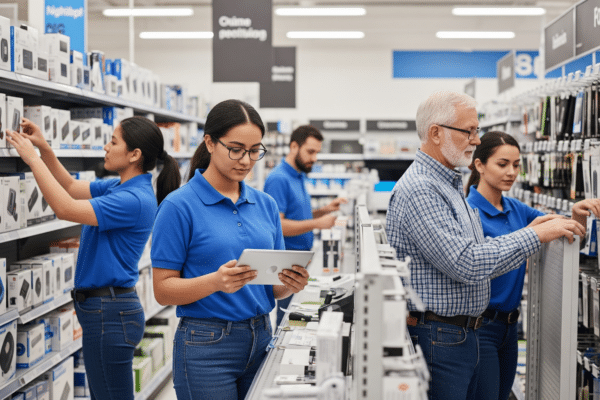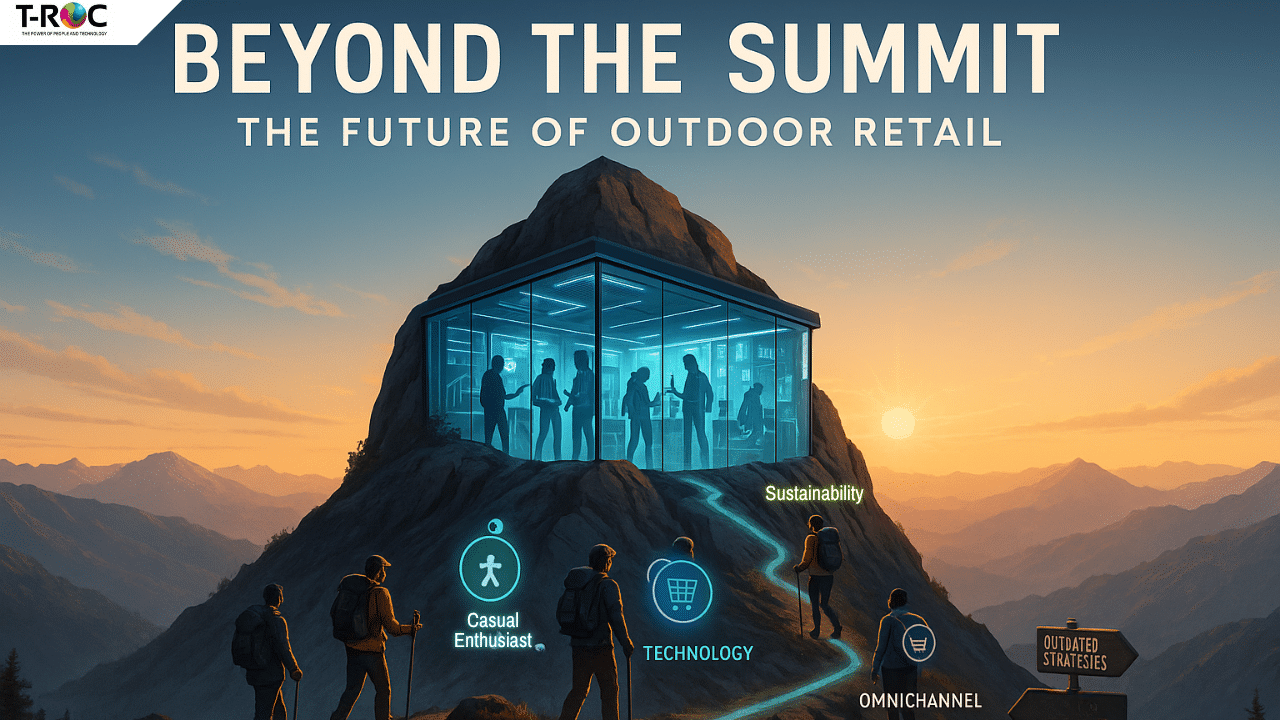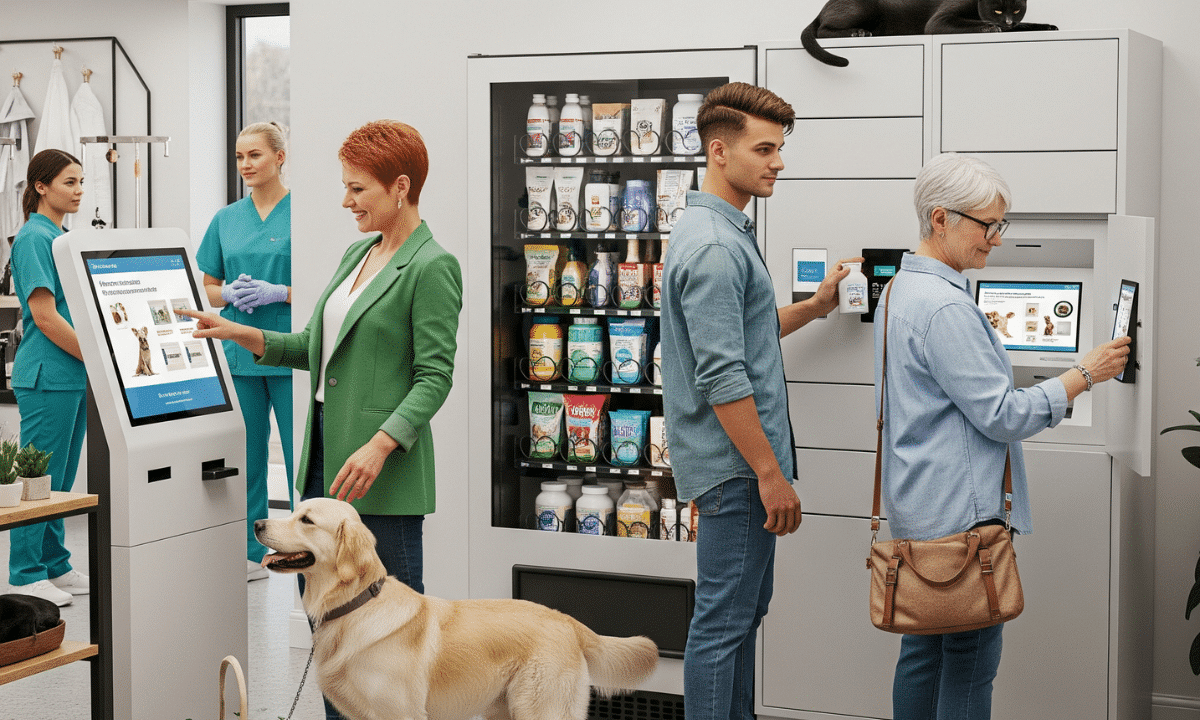
Retail Mystery Shopping: A Deeper Guide to Boosting In-Store ROI
In a retail environment defined by razor-thin margins and limitless online competition, the in-store customer experience has become the ultimate battleground. Brands can no longer leave this critical interaction to chance. You may have invested heavily in the right products, brilliant displays, and a solid marketing plan—but do you know what’s actually happening at the store level, in every location, on every shift?
That’s the billion-dollar question that modern retail mystery shopping is designed to answer.
At T-ROC, we’ve seen firsthand how a strategic approach to mystery shopping can transform the way top brands measure and improve performance. It’s no longer a simple tactic for identifying bad service—it’s a powerful data and performance driver that delivers a clear, undeniable return on investment.
What is Modern Retail Mystery Shopping?
Forget the old-school image of a secret shopper with a paper checklist and a vague summary. Today, effective mystery shopping is a core component of a comprehensive retail intelligence strategy. The process is tech-infused, leveraging digital tools, discreet video capture, AI-driven analysis, and real-time reporting to provide a holistic, multi-dimensional view of the customer experience.
This sophisticated approach moves beyond simple “pass/fail” metrics to help brands answer mission-critical questions, such as:
- Sales & Service: Are associates consistently following crucial sales protocols? Are they greeting customers promptly, asking insightful questions, and effectively demonstrating product knowledge?
- Brand Standards: Is product placement and brand messaging consistent across all locations? Are the stores clean, well-lit, and inviting?
- Promotional Execution: Are new campaigns and promotions being communicated and executed correctly and enthusiastically by staff?
- Operational Efficiency: What are the average wait times for service? How efficient is the checkout or returns process?
- Performance Variables: How does the customer experience change based on location, time of day, or specific staffing levels?
Why the World’s Top Brands Invest Heavily in Mystery Shopping
1. To Gain Unfiltered Visibility into the Customer Journey
Even the best training programs can’t guarantee that processes are being followed perfectly on the ground. There is often a “say-do gap” between what is reported by store management and what customers actually experience. Mystery shopping provides leadership with a clear, unbiased, and unvarnished view of store performance from a customer’s perspective. Think of it as the retail equivalent of a body camera—it captures the reality of the interaction, providing invaluable ground truth.
2. To Quantify the All-Important Human Element
Your sales associates are often the most valuable—and most variable—asset in retail. Mystery shopping allows brands to measure the critical behaviors that don’t show up in a sales report. For example, when a customer asks for a product, does the associate just point to an aisle, or do they walk the customer to the item, explain its benefits, and ask a follow-up question to see if there’s an opportunity to cross-sell? These are the moments that drive conversion, increase basket size, and build lasting loyalty.
3. To Drive Meaningful Accountability and Continuous Improvement
Data from mystery shopping uncovers performance gaps and helps close them, fast. It’s not about “catching” employees; it’s about coaching them. Whether it’s a specific location failing to execute visual standards or a team member missing a key part of the sales script, the data enables targeted training and continuous improvement. It also helps identify top performers whose techniques can be modeled and taught to the rest of the team, lifting the performance of the entire organization.
4. To Achieve and Maintain a Competitive Edge
Some of the most powerful insights come from mystery shopping your competition. How does their sales process compare to yours? What is their staffing level on a busy Saturday? How seamless is their return policy? This comparative intelligence is invaluable for fine-tuning your positioning, training programs, and overall experience strategy, allowing you to move from reactive imitation to proactive market leadership.
The Financial Impact: Proven ROI of a Strong Program
Brands that embed a strategic mystery shopping program into their operations see measurable improvements that directly impact the bottom line. These aren’t just abstract percentages; they represent tangible business outcomes:
- Up to a 20% lift in sales conversion rates when customer engagement protocols are consistently measured and improved. For a large retailer, this can translate into millions of dollars in new revenue.
- 25–30% faster resolution of store-level issues when gaps in compliance or training are identified in real time, reducing brand damage and improving operational efficiency.
- Higher customer satisfaction (CSAT) scores, which lead directly to increased brand loyalty, positive word-of-mouth, and greater customer lifetime value.
Simply put: what you don’t know about your in-store experience is costing you. The insights you gain through a professional mystery shopping program can pay for themselves many times over.
How to Choose the Right Mystery Shopping Partner
A great mystery shopping program run by a mediocre partner will yield mediocre results. The partner you choose is as important as the program itself. Look for a provider who can turn raw findings into strategic results. At T-ROC, we’ve evolved the traditional model by focusing on key differentiators:
- Trained Experts, Not Random Shoppers: Your shoppers should be vetted, trained, and aligned with your brand’s specific KPIs and ideal customer personas.
- Omnichannel Evaluation: The modern customer journey is fluid. A strong partner must be able to evaluate the entire omnichannel experience, including in-store, curbside pickup, and online interactions.
- Irrefutable Evidence: Modern programs should provide video and photo documentation. This irrefutable evidence supports every insight, making it easier for regional and store managers to understand feedback and act on it.
- Real-Time, Actionable Dashboards: Your team needs access to data now, not in a report a month from now. A digital platform that allows you to see trends—by store, region, or even individual team member—is essential for agility.
- Strategic Insights, Not Just Scores: The goal is improvement. A true partner won’t just deliver a report that sits in your inbox; they will help you turn findings into clear, actionable next steps that measurably improve performance.
Frequently Asked Questions (FAQ)
Q1: What is the main difference between mystery shopping and a standard retail audit? A retail audit typically focuses on quantitative, operational metrics like inventory levels, planogram compliance, and pricing accuracy. Retail mystery shopping focuses on the qualitative customer experience—evaluating sales associate behavior, service quality, and the overall feel of the customer journey. The two are complementary and, when used together, provide a complete picture of store performance.
Q2: Will my employees feel like they’re being spied on? This is a common concern, and it comes down to framing. When positioned correctly, mystery shopping is a powerful coaching and development tool, not a punitive one. It should be introduced as a way for the company to invest in its team by identifying areas where more training and support are needed. It’s about “inspecting what you expect” and celebrating success.
Q3: How often should we conduct mystery shops? The ideal frequency depends on your specific goals, store traffic, employee turnover rates, and budget. However, consistency is key. Whether it’s weekly, monthly, or quarterly, a regular cadence provides the most valuable trend data. A one-off shop provides a snapshot; a consistent program provides a motion picture of your performance over time.
Final Thoughts: From Mystery to Mastery
Strategic retail mystery shopping isn’t about catching people doing something wrong. It’s about moving from “not knowing” to “knowing,” and from “reacting” to “proactively managing” your customer experience. It is the most effective way to systematically identify the moments that matter and make them better—across every store, on every shift.
In an era where customer loyalty is harder than ever to earn and easier than ever to lose, investing in the experience you deliver is one of the smartest moves a brand can make. Top brands know their reputation is built with every single customer interaction. At T-ROC, we’re here to help you uncover the truth, empower your teams, and turn powerful retail insights into measurable revenue.
📩 Want to See How Your Stores Measure Up?
Let’s talk about how a custom mystery shopping program can boost performance and drive consistency across your locations. Contact T-ROC today to start a conversation.








